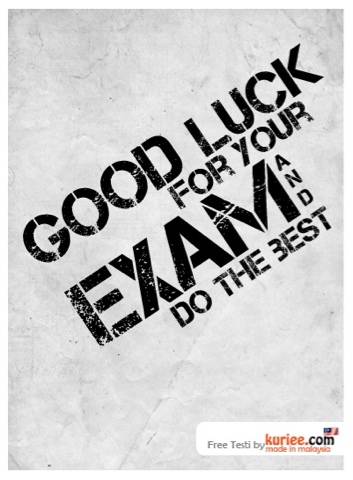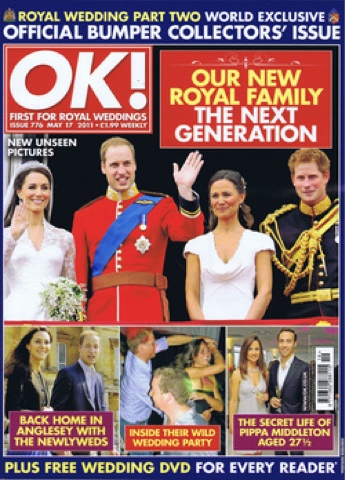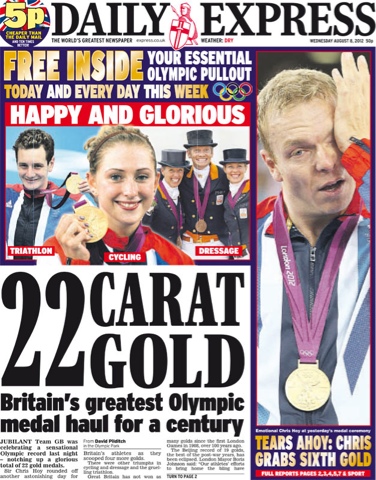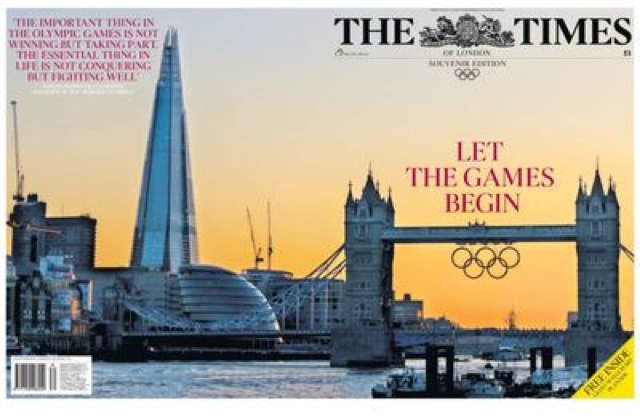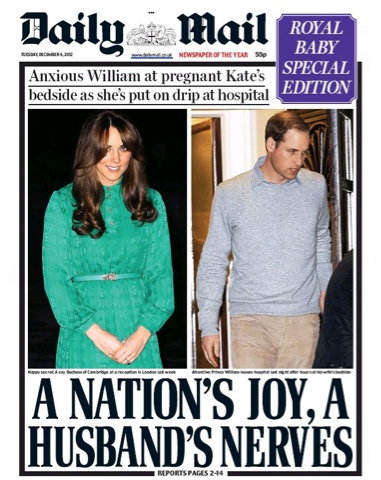A few last reminders and a message from myself and Miss Davies.
Exam is 9am in B13!
Question 1- remember organise your paragraphs based on each bullet point eg Visual Codes and include 3 visual codes.
PPE- Point, Purpose and Effect.
Audience- don't forget how they are categorised and appealed to/targeted. Know your theories!
Representations- make sure you stick to the representations given in the question.
Example based questions- 2/3 examples (unless question specifies different). Use different types of media texts.
Overall tips:
1. READ THE QUESTION!!!
2. Organise your notes and use them as a plan for your answers.
3. Manage your time effectively!
4. Don't be too descriptive!
5. Remember that all media is construction through a process of mediation and selection. The media is not a window to the world!
6. REMEMBER TO INCLUDE EXAMPLES OF SPECIFIC MEDIA TEXTS THAT ARE FROM A VARIETY OF TYPES.
Finally, we are really going to be thinking of you all tomorrow morning and praying that all do the best you possibly can! Well done for all your hard work and revision. Thanks so much for those who have attended revision sessions, accessed this blog or used their pink booklets, we are really proud of your maturity and hard work! Keep focused tomorrow, sleep well tonight and eat breakfast!
Mrs McCarthy and Miss Davies
Sunday 12 May 2013
MS1 Events Print based Examples
For those who requested some examples for events covered in the press they are below. As we discussed remember these are the events based ones do not use them if the question is issues.
Saturday 11 May 2013
MS1 Events Examples Moving Images
For those of you who were asking for some more example texts on representation of events here are a couple of moving image examples for you:
BBC, Royal Wedding Coverage
http://youtu.be/EEASes55zfg
BBC, Olympics Opening Ceremony, Isle of Wonders
http://youtu.be/7tm7NWsxRRc
BBC, Royal Wedding Coverage
http://youtu.be/EEASes55zfg
BBC, Olympics Opening Ceremony, Isle of Wonders
http://youtu.be/7tm7NWsxRRc
MS1 Best Front Pages of 2012
Great link I stumbled upon tonight thatch help you be prepared with a few more front pages of newspapers that were for some of the most high profile stories of 2012.
http://www.themediablog.co.uk/the-media-blog/2012/12/newspaper-front-pages-2012.html
http://www.themediablog.co.uk/the-media-blog/2012/12/newspaper-front-pages-2012.html
Wednesday 8 May 2013
MS1 Advertising based Audience Theory
The link below refers to the Young & Rubicam theory that categorises consumers. This audience theory is advised to be used in relation to advertising such as TV adverts, Film Trailers and Film Posters. Link below will explain the theory
http://sssfcmediastudies.blogspot.co.uk/2012/09/audience-classification-3-young.html
Tuesday 7 May 2013
MS1 Representation of Issues- Phillpott Tragedy Alternative Link
For those who have struggled to access the mediaedusites link try this link below for some similar resources:
http://www.huffingtonpost.co.uk/2013/04/03/daily-mail-mick-philpott-front-page-press-regulation_n_3007510.html
http://www.huffingtonpost.co.uk/2013/04/03/daily-mail-mick-philpott-front-page-press-regulation_n_3007510.html
MS1 Revision WEDNESDAY too!
Update is there is no rehearsal Wednesday so I CAN DO A REVISION SESSION Wednesday after school as well as Friday. Tomorrow I will be giving tips from the chef examiners! Will include key things to do and avoid plus things to make sure you revise. Friday will purely be last minute issues which will be important to attend if there are any questions so you don't go home for the weekend and get stuck on something!
Monday 6 May 2013
MS1 Audience Theory
Another reminder that it is really important that you are familiar with Audience Theories. Have a look again at your Media Theory booklet and the pink booklet in the audience section.
Also check out this link below, I have posted it before but it's such a brief and effective way of reminding you of the theories that I am posting it again:
www.mediaknowall.com/as_alevel/alevkeyconcepts/alevelkeycon.php?pageID=audience
Also check out this link below, I have posted it before but it's such a brief and effective way of reminding you of the theories that I am posting it again:
www.mediaknowall.com/as_alevel/alevkeyconcepts/alevelkeycon.php?pageID=audience
MS1 REVISION SESSION
Tuesday after school Mrs McCarthy will be running a revision session. PLEASE make every effort to attend. We will be focusing on and revisiting how to tackle those essay questions.
Friday 3 May 2013
MS1 Question 1 Practice
Study the film trailer for Grown Up's 2 (2013)
NOTE DOWN THE BULLET POINTS FOR WHAT YOU WOULD DISCUSS AND INCLUDE IF YOU WERE TO RECIEVE THIS AS YOUR PAPER ON YOUR OWN BLOG.
1. Analyse the extract commenting on:
- visual codes
- technical and audio codes
- genre coventions
Thursday 2 May 2013
MS1 EXAM FEEDBACK
Here are some of the points you could have included in your answers today:
QUESTION 1:
Visual Codes:
QUESTION 2(a):
Audiences that you could have included:
audience(s) interested in serious documentary programmes
audience(s) interested in the subject matter
particular demographics
younger audiences attracted by the subject matter
older audiences/parents watching for information
drug users
QUESTION 2(b):
QUESTION 2(c):
Responses that you could have included linking with your own examples:
conflict diamonds
the representation of young/old people
gangs
war
issues of child sex slavery and child soldiers arising from reporting on Kony
teenage pregnancy
violence.
Visual Codes:
- use of graphics (including countdown and names of drugs in title sequence)
- title sequence
- images of drugs
- contrast between studio lighting and natural lighting (also a technical code)
- facial expression - serious tone of programme
- informal dress codes of 'experts'
- newsreader's voice
- voiceover narration
- archive footage of news
- use of close-ups/extreme close-ups
- editing (use of fades/dissolves, slow motion, jump cuts)
- use of music
- filming techniques to emphasise constructed nature if the programme.
- factual/documentary nature of the programme
- informative voiceover
- vox pop interviews
- use of interviews with experts
- use of different types of footage appropriate to the documentary/factual programme (archive, vox pop, visual images relating to the subject matter of the programme)
- use of (dramatic) images relating to the subject matter
- subject-specific lexis to establish the tone of the programme.
Audiences that you could have included:
- regular viewers of the Horizon documentary series
- the presentation of the programme (attempting to appeal to a younger audience)
- the presentation of the programme (attempting to make the subject matter dramatic)
- informative/serious tone of the programme
- Close-ups/extreme close-ups/editing - attempting to attract a younger audience/making the documentary interesting for regular documentary viewers
- information delivered in a range of ways.
Responses that you could have included linking with your own examples:
- use of technical and audio codes e.g. camera shots, editing, sound (audio-visual texts)
- layout and design (print texts).
- language and mode of address
- use of images
- use of stars, celebrities, presenters etc.
- presentation of subject matter.
- Best answers should always refer to purpose and effect.
QUESTION 3:
Popular examples from previous past papers included:
- body image
- poverty
The best answers for question 3 should introduce the concept, demonstrate understanding of representation through the analysis of specific media texts and then summed up the points in a conclusion. Also the best responses should discuss the chosen issue with reference to detailed examples from a range of formats and to show a more perceptive understanding of representation as a media concept incorporating: context, ideology, construction and mediation.
WE WILL GO OVER THIS NEXT WEEK BUT PLEASE NOTE DOWN ANY ELEMENTS THAT YOU MISSED.
Wednesday 1 May 2013
MS1 Issues- Example Texts
Please use the MediaEdusites login to access the example resource material for Issues based upon the Philpott Family.
Subscribe to:
Posts (Atom)

